#techniques de divination
Explore tagged Tumblr posts
Text
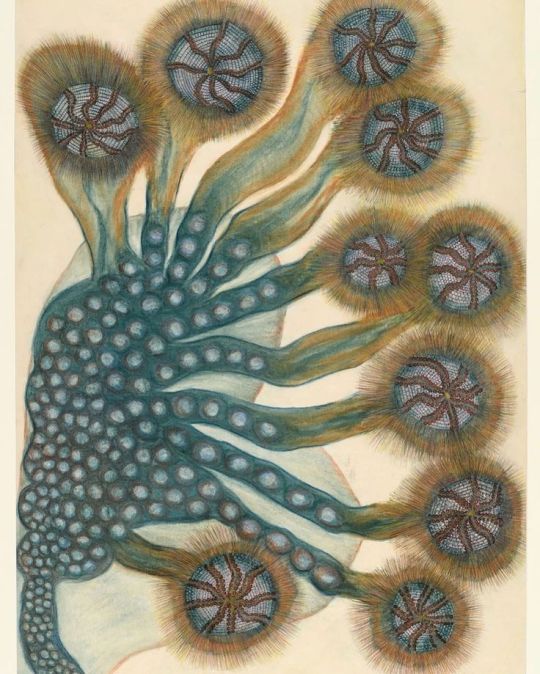
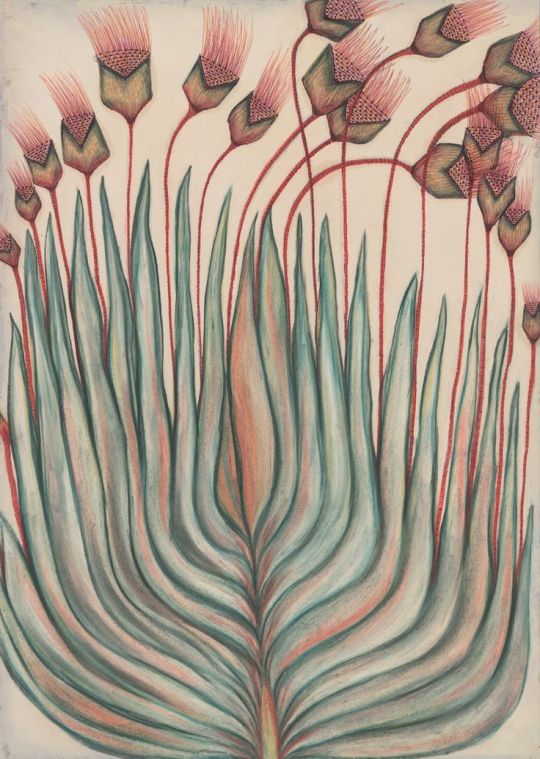
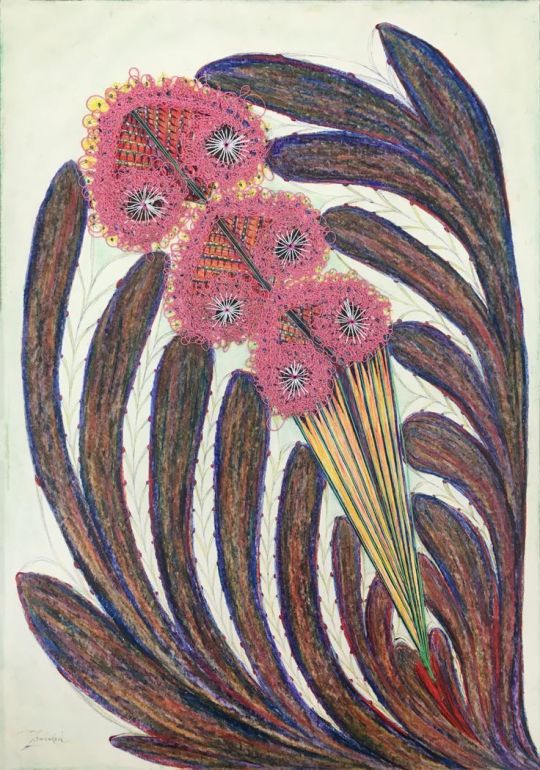

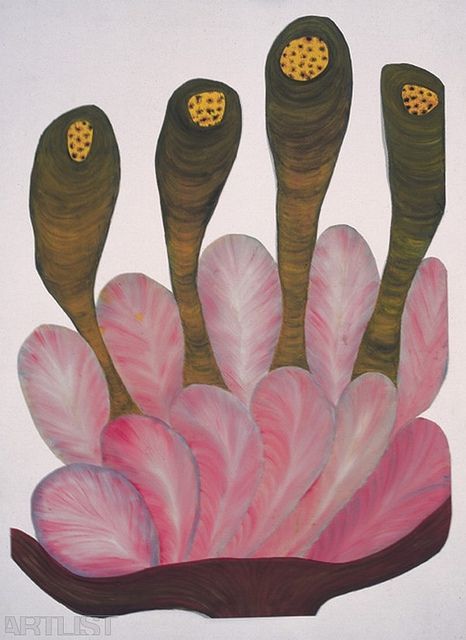

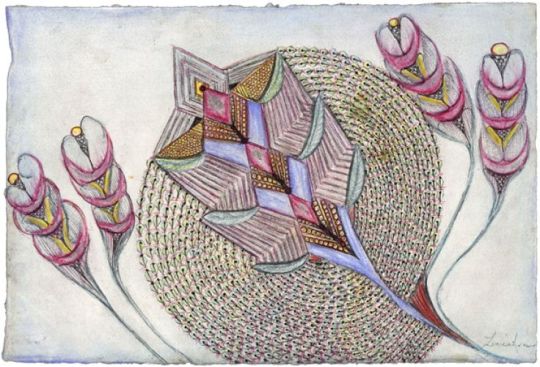




“I am growing flowers that are not grown anywhere else”: the fantastical botanica of an Art Brut genius
The work of Czech painter, draftsman and pastel artist Anna Zemánková (1908–1986) defies easy definition and categorization. As a self-taught artist, Zemánková tends to be described as Art Brut, but her Art Brut is of a mysterious and magical strain. Her work gives the viewer the impression of entering a herbarium of fantastical extraterrestrial plants or a unique, imaginary world, always created by the artist using newly discovered and often surprising techniques.
Like most artists, Anna Zemánková was encouraged, from a very young age, to pursue a more lucrative career. From the age of fifteen to eighteen, she studied dentistry and then worked as a dental technician until her marriage, when she forwent paid labor in order to care for her children. In 1948, she and her family moved to Prague, and when she found herself increasingly depressed, her son, a sculptor, implored her to pursue the creative work she had previously disavowed. Early in the morning, before anyone else arose, she’d sketch pastel and ink onto large swaths of paper, creating botanical dreamscapes all her own. As a self-taught artist, Zemánková tends to be described as art brut, but her art brut is of a mysterious and magical strain. She believed her inspiration was derived from a divine source: “I am growing flowers,” she said, “that are not grown anywhere else.” Following a major retrospective of her work at the Collection de l’Art Brut in Switzerland last summer, Kant Books has released a stunning three-hundred-page monograph.
https://www.theparisreview.org/.../flowers-not-grown.../...
133 notes
·
View notes
Text
Witches & Witchcraft: Types & Definitions
There is an abundance of types of witches, some being more common than others, for example, death witch or hedge witch. I have provided the different types of witches with a brief description/definition of what they study, believe and tools most commonly used for each.
The types of witchcraft is entirely up to the individual which they prefer to do. One person may only follow on type of magick whereas another may follow several. Listed are a handful of the many kinds, but I'm listing the most common/known types of magick/witchcraft that people fall into.
I have grouped some witches together as they fit together under the same or similar definitions.

Types of Witches
Religious witches;
Christian, Satanic (Theistic), Laveyan Satanic, Hellenic, Celtic and Wiccan, etc. are witches that follow a primary belief system and incorporate their religion into the craft.
Non-Religious witches;
Secular - doesn't work with [a] deity(ies).
Science - (also a craft type), uses metaphysical and scientific fads and theories mixed together.
Other types of witches;
Solitary - works alone and is not part of a coven. Won't typically work with other witches for spell work or any part of their practice.
Eclectic - a practice that includes multiple practises from different areas. A mixture of all practices, may practise one more than another, or all equally.
Hereditary/Generational - a witch who is born into a family whom practice the craft. The term 'Blood witch' is often a hot topic of controversy as to whether it makes one a more powerful witch.
Traditional - a type that is based on honouring the traditional ways of magick, which also ties in nicely with generational/hereditary witches.
Chaotic/Chaos - a witch who utilizes new, non-traditional and unorthodox methods. It's still relatively new and highly individualistic practice while still drawing from common forms of magick.

Types of Witchcraft/Magick
Green Witch; A witch who uses natural magick, such as creating blends of different plants, or primarily using herbs and/or crystals spells in their craft. Tools mostly consist of herbs, crystals, stones, flowers, soil or other greenery.
Hedge Witch; Also know as an astral witch, this type of magick is orientated around spiritual work such as astral projection, lucid dreaming, spirit work, healing and out-of-body magick. Tools mostly consist tarot cards, runes, pendulum, stones, crystal ball, mirrors & candles.
Dream Witch; Mindful and internal magickal practice mainly based from interpreting dreams and/or engaging in lucid dreaming. Practises used to 'de-code' symbols and messages in the dream world can be used similarly to how one would use divination techniques. Tools mostly consist of dream catchers, candles, books of glossaries of symbols.
Sea/Ocean; Derived from materials and abstract ideas involving ocean and the oceanic world. Sea or ocean magick can be worked with by using things found on or relating to a beach/lagoon. A sea witch might draw their energy from such tools. Tools commonly consist of driftwood, pebbles/stones, seashells, ocean water, bones, seaweed, candles.
Storm/Weather; magick used through combining one's energy with the weather; most commonly rain. Weather witches will collect different ingredients provided by the weather, absorb energy from storms, manipulate winnds, or perhaps predict the weather. Tools most commonly consist of rain/snow water, symbols/weather maps, crystals.
Cottage/Hearth; Magick that is weaved and worked or embedded into mundane tasks around the house or for loved ones. Cottage magick is usually worked into cleaning, hobbies or cooking. Tools commonly consist of essential oils, incense, bells, flowers, cleaning utensils, spices and herbs.
Tea Witch; Creating blends of teas for protection, remedies or even to use for tea-leaf divination. Tools commonly consist of tea, herbs, waters, spices.
Tech Witch; Use of technology in the craft, mostly based through phones or computers. Mostly used for storing of information, grimoires, spell books and Book of Shadows/diaries. Tools consist of apps on the phone, digital sigils, online blogs and pages.
Garden/Flora; Mostly (if not all) focused on herbal and botanical measures. Many garden witches have their own garden and plant flowers and herbs to draw in energy for their home and to include in rituals and spells. Tools commonly consist of flowers, soil, seeds, greenery, twigs/tree branches, leaves.
Elemental; Using all 4 (or 5) elements in an honouring or acknowledging form. A witch can choose to work with all, or singular elements. One may have a dedicated area on their alters to a particular elements. Tools consist of anything related to said element.
Faery/Fae; Magick for those who communicate with, and/or work with the Fae. Those whom work with fae may also leave offerings regularly as thanks for the assistance of a faery in their spell work. Tools commonly consist of anything sweet, sigils, offerings.
Spirit; A practice which an individual will perform spell work in conjunction with (or the help of) any manner of spirit, including Ouija, demon spirits, spiritual contact of any kind, working with ancestors. Tools commonly consist of crystals, bells, incense, Ouija boards, tarot cards, pendulums, sigils.
Draconian: The use of dragons and dragon imagery; whether it be trough astral matters or in spells and rituals. May also be connected with dragon spirits on their journey. Tools commonly consist of dragons art, statues, candles.
Seasonal; Utilizing and drawing energy from specific time periods of the year for their magick. One individual may feel more powerful at a particular time of year. It can also be spread out into the 4 seasons. Tools commonly consist of herbs related to certain seasons, stones, ruins and the weather.
Music; Can be through singing, humming, playing an instrument, creating music or having it on during spell work to add energies. Tools consist of speakers, instruments, voice, chimes, lyrics & sheet music.
Art & Craft; Anything from painting to knitting to building something. Tools consist of anything you can craft with.
Sigils; Working majorly with sigils and the intent that can be put into them to activate their power. Tools commonly used are pens, paper, makeup, candles.
Astronomy/Space/Luna; Correlates their belief in conjunction with the planets, stars and/or moon. Versed in moon phases and tend to do spell work at night rather than day time. Tools commonly used are horoscopes, calendars, charts, moonlight, moon water.
Energy; Those who prefer to do magick through energy exercises and manipulation rather than many physical tools or materials. This may also include aura work. The only tools needed for this type is yourself.
Crystal; Magick that is worked commonly with stones and crystals. The practise may include chakra balancing, crystal meditation and even spell work or rituals. Extensive knowledge of stone, including how to identify them. Tools most commonly used are crystals, books, grimoires and stones.
Literacy; Those who practise through books and literature - studying the craft after the 'beginner' phase of learning. Tools are books, poems, written work.
#witch#witchcraft#witchblr#pagan#wicca#witches#pagan witch#paganism#pagan wicca#witches of tumblr#baby witch#beginner witch#new witch#pagans of tumblr#witchcore#witch community#witch tips#witchy vibes#witch aesthetic#witchy woman#paganblr#hellenic pagan#celtic paganism#polytheism#grimoire#book of shadows#magick#folk magic#spell
299 notes
·
View notes
Text
Here's a hot take that many people might disagree with, but it's a hill I am ready to die on: traditional tarot decks are in every way superior to modern, mass made ones, and they get WAY less love by the modern tarot community.
The number of people I see rejecting decks such as the RWS or the Tarot de Marseille because they're "ugly" is honestly just sad. The whole modern tarot culture of buying decks based on just the aesthetic value and nothing else is pretty toxic and is just a bad way of doing it. When picking a deck, you should learn about the system, history, and deeper meaning of the cards and pick based on that.
There is also a whole world of historical systems of tarot divination that are completely neglected because everyone is just using the same basic little white book meanings for the cards. The Eteilla system, for example, is incredibly beautiful and complex but is totally obscure to most people. The same goes for the technique used with the Tarocco Bolognese in Italy. The new age method of reading seems to have completely consumed every single tarot space and pushed most other things out.
I am not saying that every new deck is bad or that the new age tarot reading method doesn't have its place, but as you learn and progress you should study these older, deeper systems and at least be familiar with them. I'm not even sure if most people are aware of how deep the tarot rabbit hole goes.
Also, another deck I have deep personal beef with is the Modern Witch tarot deck. It is basically a yassified version of the RWS, and it completely whitewashes all hermetic symbolism of the RWS, and a lot of people still choose it over the RWS because it is more diverse. The thing is, I'd argue that the RWS is actually really good at representing diversity because it was made by a queer woman of colour in a period where that was basically unheard of, and her contributions were downplayed until today, and now that we are aware of them, we still choose to call her work ugly or problematic somehow.
#pagan witch#paganism#right hand path#norse paganism#hellenic pagan#hermetic#hermeticism#witchcore#wicca#witches#witchcraft#tarotblr#tarot reading#hot take#hellenic polytheism#hellenic devotion#hellenic polythiest#roman polytheism#norse runes#norse gods#divination
57 notes
·
View notes
Text
References in Servamp
Arabian mythology
Jinn. Ch. 16
Greek mythology
Elpis. Ch. 75
Moirai. Ch. 108
Pandora. Ch. 130
Pygmalion. Ch. 123
Pandora's Box. Ch. 97
Japanese mythology
Gashadokuro. Ch. 129
Kitsune. Ch. 3
Raijin. Ch. 85
Norse mythology
Baldr. Ch. 39
Bifröst. Ch. 88
Brunhild. Ch. 88
Fimbulwinter. Ch. 40
Freya. Ch. 65
Frey. Ch. 131
Gleipnir. Ch. 101
Hati. Ch. 91, 131
Hod. Ch. 39
Hliðskjálf. Ch. 96
Idunn. Ch. 65
Loki. Ch. 15
Mimir. Ch. 29
Mjölnir. Ch. 53
Ragnarök. Ch. 101, 122, 131
Sigurd. Ch. 101
Thor. Ch. 41
Yggdrasil. Ch. 42
Biblical references
Abel. Ch. 8
Adam. Ch. 128
Boaz and Jachin. Ch. 42
Eden. Ch. 21
Eve. Ch. 1
John the Baptist. Ch. 122
Judith. Ch. 147
Lucifer. Ch. 135
Noah. Ch. 145
Nod. Ch. 29, events
Hinduism
Asura. Ch. 57.5, 89.
Tarot
The Fool - Mahiru. Ch. 50
I. The Magician – Night trio. Ch. 41
II. The High Priestess – Mikuni. Ch. 42
V. The Hierophant - Shuhei. Ch. 77
X. Wheel of Fortune - Junichiro. Ch. 53
XII. The Hanged Man - Tsurugi. Ch. 50
XV. The Devil – Shamrock. Ch. 72
XVI. The Tower - Touma. Ch. 47
XVII. The Star - Iduna. Ch. 73
XVIII. The Moon - Yumikage. Ch. 69
XX. Judgement - Mikuni. Ch. 144
Literary references
"Alice's Adventures in Wonderland" Lewis Carroll. Ch. 3, 4, 7, 19, 98, 122. Misono, Lily, Dodo, Mitsuki, Yamane, Hattori, Mikuni, Bad B and Good B.
"As You Like It" William Shakespeare. Ch. 10, 38.5. Mikuni's spell.
"My Fair Lady" English nursery rhyme. Ch. 10 Mikuni's spell.
"Dracula" Bram Stoker. Ch. 12, 30. Hugh.
"Romeo and Juliet" William Shakespeare. Ch. 23, 34. Hyde, Ophelia.
"Faust" by Johann Wolfgang von Goethe. Ch. 29 Johannes.
"Through the Looking-Glass" Lewis Carroll. Ch. 29, events. Mikuni, Johannes.
"Julius Caesar" William Shakespeare. Ch. 23, 84. Hyde.
"Strange Case of Dr. Jekyll and Mr. Hyde" Robert Stevenson. Ch. 23, 37. Hyde, Licht.
"Macbeth" William Shakespeare. Ch. 24, 31. Kuro, Saint Germain, Mahiru.
"Night on the Galactic Railroad" Kenji Miyazawa. Ch. 26, 142. Higan, Tsubaki.
"The Little Prince" Antoine de Saint-Exupéry. Ch 30, 67. Kuro, Mahiru, Sloth demon, Gear, probably Jeje.
"Hamlet" William Shakespeare. Ch. 33, 34. Hyde, Ophelia.
"The Phantom of the Opera" Gaston Leroux. Ch. 36 Licht and Hyde technique.
"Peter and Wendy" James Barry. Ch. 44, 56, 74. Tsurugi, Touma, Mahiru.
"Ring a Ring o' Roses" nursery rhyme. Ch. 53 Junichiro's spell.
“Peter Pan in Kensington Gardens” James Barry. Ch. 53, 75. Tsurugi, Touma.
"Death in Venice" Thomas Mann. Ch. 55 Gilbert technique.
"Total Eclipse" a play by Christopher Hampton. Ch. 55 Rayscent's technique.
"The Morning of the Last Farewell" Kenji Miyazawa. Ch. 57.5 Tsubaki.
"Spring and Asura" Kenji Miyazawa. Ch. 57.5 Tsubaki.
"The Catcher in the Rye" Jerome Salinger. Ch. 62 Shuhei.
"Four and Twenty Blackbirds" Agatha Christie. Ch. 62 Shuhei's spell.
"Metamorphosis" Franz Kafka. Ch. 62 Shamrock technique.
“The Nighhawk's Star” Kenji Miyazawa. Ch. 62, 76. Shamrock technique.
"Rock-a-bye Baby" an English lullaby. Ch. 70 Touma's spell.
“Schlafe, mein Prinzchen, schlaf ein” lullaby. Ch. 70 Touma's spell.
"Who Killed Cock Robin" an English nursery rhyme. Ch. 70 Yumikage's spell.
"The Wonderful Wizard of Oz" Lyman Frank Baum. Ch. 70, 88. Tsukimitsu brothers’ spells.
"Daddy-Long-Legs" Jean Webster. Ch. 74. Dark Night Trio, Touma.
"King Lear" William Shakespeare. Ch. 86. Hyde.
"The House of the Sleeping Beauties" Yasunari Kawabata. Ch. 86. Iori.
"The Divine Comedy" Dante Alighieri. Ch. 118, 120, 121. Niccolo, Ildio, Gluttony demon.
“A Brute's Love” (人でなしの恋) Edogawa Rampo. Ch. 122 Mikuni, Lily.
"Coppelia" ballet Leo Delibes. Chapter 122 Mikuni, Lily.
"Salome" Oscar Wilde. Ch. 122, 147. Mikuni, Lily.
"Turandot" opera by Giacomo Puccini based on the play by Carlo Gozzi. Ch. 129, 136. Lily.
"The Tempest" William Shakespeare. Ch. 131. Licht and Hyde.
"The Old Man and the Sea" Ernest Hemingway. Ch. 134 Hugh.
"Flowers for Algernon" Daniel Keyes. Ch. 135 Hugh.
"Jane Eyre" Charlotte Brontë. Ch. 136. Hokaze.
"Madama Butterfly" opera by Giacomo Puccini. Ch. 136. Lily.
"Hansel and Gretel" the Brothers Grimm. Ch. 140. Faust and Otogiri.
"Girl Hell" Yumeno Kyusaku. Ch. 147. Mikuni, Noah.
Music
"Für Elise" by Ludwig van Beethoven. Ch. 34
"Jesu, Joy of Man's Desiring" by Johann Sebastian Bach. Ch. 125
Sonata No. 17 "Tempest" by Ludwig van Beethoven. Ch. 131
Movies
"It's a Wonderful Life" (1946). Ch. 131
"Life is Beautiful" (1997). Ch. 131
I believe this list can be expanded. Somewhere I’ve written only chaps when some reference was mentioned for the first time and omitted all further mentions.
Special thanks to hello-vampire-kitty, joydoesathing and passmeabook, because some works wouldn’t be included in the list without their observations.
317 notes
·
View notes
Text
🌌 PART I: The Arab Astrologers—Names You Must Know

📝Abū Maʿshar al-Balkhī-known in Latin as Albumasar
Born in Balkh (modern Afghanistan) in 787, a former hadith scholar who turned to the stars in midlife.
His Kitāb al-Madkhal al-Kabīr (The Great Introduction) became the bedrock of European astrology when translated into Latin.
He systematized planetary natures, zodiac signs, houses, aspects, and the elements.
His “conjunction theory” argued that history moves in great cycles, marked by rare celestial alignments—especially Jupiter-Saturn conjunctions, which he claimed heralded the rise of prophets and empires.
"All change under heaven is written first in the sky."
📜 Al-Kindi – The Philosopher of the Arabs
A polymath in the Abbasid court, blending Greek philosophy with Islamic theology and celestial theory.
In De Radiis Stellarum (On the Stellar Rays), he proposed a theory of stellar influence—not superstition, but a natural force, like light or magnetism.
He laid early groundwork for what would become natural philosophy (proto-science), suggesting stars transmit influence through rays affecting Earthly matter and human temperament.
🌍 Al-Biruni – The Observer from Khwarezm
Though more astronomer than astrologer, he cataloged astrology in full without ever endorsing its claims outright.
His Kitāb al-Tafhīm contains precise definitions of astrological terms, planetary motions, and how horoscopes are calculated.
A master of cultural synthesis: he compared Greek, Indian, and Persian systems, noting their commonalities and contradictions.
🕊 Abū al-Rayḥān al-Sijzī & Al-Zarqālī – Instruments of the Sky
Developed the astrolabe, armillary spheres, and zij tables—astronomical charts used by astrologers to pinpoint planetary positions with astonishing accuracy.
🪐 PART II: What the Arabs Contributed to Astrology
🧠 1. A Philosophical Foundation
Arabs didn’t just practice astrology—they thought about it. They debated whether the stars compel or merely incline.
Al-Farabi and later Avicenna argued the stars could only affect the body, not the soul—a blend of Neoplatonism and Islamic ethics.
The stars whisper, they do not command.
📊 2. Horoscopic Techniques Refined
Arabs inherited and enhanced horoscopic astrology from the Greeks:
Twelve Houses (Bayūt): Places in the chart signifying career, love, health, death.
Lots (Arabic Parts): Points calculated from planetary positions, like the Lot of Fortune and Lot of Spirit, used to fine-tune predictions.
Triplicities and Dignities: Systems to assess planetary strength.
Interrogations (Horary Astrology): Divining answers to specific questions, such as “Will I marry?” or “Will the king win this war?”
⚔️ 3. Political and Historical Astrology
Astrologers like Abū Maʿshar claimed that world events—plagues, conquests, religious shifts—were written in planetary cycles.
Used to time coronations, launch battles, found cities.
Caliphs would sometimes delay decisions until the astrologers said the heavens were "favorable."
🏥 4. Medical Astrology
Used zodiac signs to diagnose and treat illness—Aries rules the head, Pisces the feet, and so on.
Ibn Sina (Avicenna) himself, though skeptical of predictive astrology, used astrological charts for medical diagnoses, especially in fevers and crisis periods.
🌠 PART III: Astrology in Islamic Society
🌗 Religious Debate
The Qur’an warns against claims to know the unseen:
"Say: None in the heavens or on the earth knows the unseen except Allah." (Qur’an 27:65)
So Islamic scholars:
Allowed astronomy (for timekeeping, Qibla direction).
Permitted astrology only if used to understand natural rhythms—not fate.
Condemned fortune-telling or attributing independent power to stars.
Yet astrology persisted—not as dogma, but as courtly art, folk belief, and scientific curiosity.
🕯 PART IV: The Transmission to Europe
Translations of Arabic astrological texts into Latin via Toledo and Sicily reawakened Europe’s interest in the stars.
Terms like zenith, nadir, azimuth, almanac, and even algorithm come from Arabic.
Albumasar, Albohali, Messahala—all Arabic astrologers Latinized into the canon of European learning.
The Renaissance astrologers (like Ficino and Agrippa) drank deeply from Arab wells.
🌌 In Closing: A Legacy Like the Night Sky
The Arabs did not merely gaze at the stars—they listened to them, charted them, debated them, and passed on their wisdom in tomes that still echo today. Astrology, as they practiced it, was never just fortune-telling—it was philosophy, poetry, medicine, and mathematics entwined in a cosmic dance.











#astro community#astro observations#astrology#vedic astrology#astro notes#tarot#art#poetry#quotes#gaza#Mid century#dark aesthetic#arab scholars#arab#stars#moon#capricorn#leo#cancer#aquarius#sagittarius#libra#scorpio#pisces#taurus#aries#gemini#virgo#zodiac#full moon
28 notes
·
View notes
Text
i saw an instagram post of this ballet couple and it's actually making me feral ????? i didn't know i needed a "riorgail as ballet dancers" fantasy but oh my god ?????? hold on tight y'all.
imagine:
empty studios with low lights, late at night. he's in nothing but tight shorts and she's in her leotard. the room is warm, always so warm. but they don't care and have been in there for ages, even after their hours of other rehearsals for the day. she's a soloist and he's a principal with the company and he has made it his personal mission to help her ascend the ranks since she was in the corps and he was a soloist because he truly believes in her talent. it doesn't matter how tired he is, he will always stays late with her to work on technique, partnering, whatever she wants, but only when she asks. he's always praising her and constantly finding any excuse to call her pretty through complementing how she moves. he's loves teaching her new skills and gets so excited the first time she nails them, which is usually faster than the average dancer because she's so dedicated. and his heart sings every time she says she can't wait to show him how much better one of them has gotten since last time he saw her do it. and she teaches him too, each of their little meetings is full of choreography she dreams up, trying it out with him to see what works and what doesn't. this is how they truly learn each other's minds, bodies, souls. what the art really means to them, what they mean to each other. it's no surprise that they dance their very best with each other because they have the most trust in one another. whether it's in front of an audience or just the two of them, they always have an electric chemistry, gibing each other everything in their performances, even when it's only for a mirror. AND THE MIRROR! don't even get me started! constantly staring. like always. warming up, class, rehearsals, their own little practice sessions. always. she's stabbed herself with a needle while sewing the ribbons onto her pointe shoes before because she got distracted when she caught his gaze in the mirror. and they always stand next to each other at barre. they usually get there early to stretch together and talk before class prevents them from doing so for a couple hours. and they're also usually struggling not to get distracted in said class but they can't imagine standing apart for that long. and when they're in different rehearsals throughout the day, they make up for it by spending hours with their hands on each other after. bare chest, open back leotard. hand in hand, to balance her or with her fingers wrapped around his to do a turn. quite literally throwing her around sometimes in various lifts. he's never dropped her. he refuses to. and sometimes they have moments while practicing their pas de deuxs where they'll abandon the choreography completely and just dance. something sacred in how it's unrehearsed and unhurried. two forms intertwining as one within whatever classical music envelops them that night. she somehow always ends up lifted into his arms. he slides her down his body and pulls her into the most soul-crushingly beautiful kiss. she often tries to rise up onto her toes to meet him and even though she's still shorter than he is, the angle is always just perfect. that part is very well rehearsed. and when it's done and they're breathless from the dancing or the utter lack there of, he'll help her untie the ribbons around her ankles and knead at her calves, kneeling between the straddle she makes with her legs to stretch as she digs her fingers into some place in his neck that feels divine every time. they press their sweat slicked foreheads together, just breathing, sometimes dotting balm onto each other to help their sore muscles. she always bundles both of them up in their layers so their muscles don't get cold on the way home and forces him to drink water on the way out because he forgets in his desire to make sure she's taken care of first. and they do it all again the next day. <3
#thank you for indulging me#my dancer brain took over#this was so stream of consciousness sorry if it's unreadable#fourth wing#iron flame#the empyrean#violet x xaden#violet sorrengail#xaden riorson#riorgail
96 notes
·
View notes
Text
What do ikeprince suitors smell like? Pt. 1
Have you ever wondered how our pookies would smell or what perfumes woulds they wear if they were real? Because I do, and it almost keeps me awake at night. But don't worry, I'm here to satisfy your curiosity. I've assigned each IkePri suitor scents and perfumes based on information from the routes and, of course, mainly on the vibes they give me.
Sariel Noir
The Palace Devil definitely wears a complex yet sophisticated perfume, with a fresh and spicy top note and a warm, woody base.
Notes: mint, ginger, cinnamon, cardamom, vetiver and tonka beans.
Perfumes he might like:
Five O'Clock Au Gingembre - Serge Lutens - His favourite
Spicebomb - Viktor & Rolf
Noir Extreme - Tom Ford
(He also has the Miss Dior perfume, courtesy of Clavis, but he keeps it because he secretly loves his troublemaker lil baby, but ssshhh.)
Rio Ortiz
The Puppy Butler uses a vibrant and cheerful perfume with fresh floral vibes and a sweet warm base.
Notes: mandarin, sweet lemon, neroli, orange flower, peach and amber.
Perfumes he might like:
Light Blue Intense - Dolce & Gabbana
Orange blossom - Jo Malone London - His favourite
Versace Pour Homme - Versace
Keith Howell
The Gentle Stag goes for something more fresh and citrusy with a heavy heart of herbal spices and aromatic herbs on top of a woody base.
Notes: bergamot, yuzu, basil, clove leaf, vetiver and cedarwood.
Perfumes he might like:
Neroli Portofino - Tom Ford
Bleu de Chanel Eau de Parfum - Chanel
Colonia Club - Acqua di Parma - His favourite
Emerald Thyme - Jo Malone
Forest Lungs - The Nue Co.
Silvio Ricci
Our Haughty Jingler Jangler is definitely tied to the ocean (and alcohol). I feel like he would go for something fresh and spiced with a sophisticated warm base. Also, he's a bougie boy, so he has a lot of perfumes. He doesn't have a favourite perfume, because he loves the layering technique, he is unique and doesn't want anyone smelling as good as him, period.
Notes: Ron, mandarin, bergamot, mint, nutmeg, cardamom, amber, musk, ambrette seed, sea salt and sea moss.
Perfumes he might like:
Bvlgari Man Extreme - Bvlgari
Allure Homme Èdition Blanche - Chanel
Wood Sage & Sea Salt - Jo Malone London
Herbal Aquatica - Montale
Fougeres Marines - Montale
Virgin Island Water - Creed
Un Jardin en Méditerranée - Hermès
Seahorse - Zoologist Perfumes
Gilber Von Obsidian
This pookie The conqueror beast smells like the blood and fear from his enemies, just kidding. He probably likes winter fresh like scents with some herbal and floral notes on top of a woody base. Something that dries out warm and kind of sweet.
Notes: Sweet basil, fennel, neroli, winter daphne, blacktea, rum, amber and vanilla.
Perfumes he might like:
Noir Extreme - Tom Ford (He probably stole it from Sariel while visiting his boyfriend bff Chevi)
Terre d'Hermès - Hermès
Viking - Creed - His favourite
Silver Mountain Water - Creed
Kagari Amagase
We still don't know much about this dorayaki lover kitty (Doraemon is that you?) so this is just based on assumptions. We know he is competitive, he seems elegant and sophisticated at first sight and has stolen the hearts of the fandom with those feline eyes. So I feel like he goes for citrusy and fresh scents, with a bit of spice an sweetnes on top of a warm and sensual base.
Notes: Bergamot, mandarin, ginger, cherry blossom, white floral, ylang-ylang, cinnamon, sandalwood, amber and musk.
Perfumes he might like:
Gabrielle - Chanel
Premier Figuier - L’Artisan Parfumeur
Zen for Men - Shiseido - His favourite
Especially Escada - Escada
Azel Radwan
We also don't know much about Tanzanite's God. But we know that he is a God, and ethereal, and beautiful, an slay, and a God, and mysterious, and a God, maybe broke (but we still love him), and he is a God. We can't forget that he is a God, 'cause he is a God, just in case you didn't know he is a God. He definitely smells divine, aromatic and warm, maybe kind of spicy with white florals. He gives me vibes that he has a huge collection of arabian perfumes, 'cause he a sassy.
Notes: ylang-ylang, lotus flower, bergamot, jasmine, violet, frankincense, amber, oud, musk, tea, tonka beans and vanilla.
Perfumes he might like:
Royal Oud - Creed
Oud Wood - Tom Ford
Interlude Man - Amouage - His favourite
Reflection Man - Amouage
Royal princess Oud - Creed
Mukhallat - Montale
Borneo 1834 - Serge Lutens
Matthias Asbrink
Again, we still don't know much about him, but we do know that our cold boy is a firm and strict protector of law and justice. I don't know about you, but I feel like he smells like a breath in a snowy mountain at midwinter, refreshing, almost freezing. But he is elegant, discreet and sophisticated. He might seem cold but I'm sure he is warm and cozy on the inside (and a little freak iykyk). If I had to describe his scent vibe in a sentence it would probably be "like drinking a hot chocolate in front of a fireplace after a morning in the middle of the snowy mountains of Northern Europe."
Notes: Snow, cypress, honeysuckle, cardamom, bergamot, iris, lavender, clove, vetiver, cedarwood, leather, cinnamon and chocolate.
Perfumes he might like:
Homme Intense - Dior
Aventus - Creed
Silver Mountain Water - Creed - One of his favourites
Black Orchid - Tom Ford
Chocolate Greedy - Montale
Man In Black - Bvlgari
Glacial Essence - Bvlgari
Gentleman - Givenchy - One of his favourites
Snowy Owl - Zoologist Perfumes - Another favourite because you gifted it to him. You thought it was cute that the cold man from the north that has an owl as his crest deserved a perfume cutely named "Snowy Owl".
Penguin - Zoologist Perfumes
And here it ends part 1 of "What do ikeprince suitors smell like?". Stay tuned for part 2 with our iconic princes of Rhodolite my dearies. Love you all!!!!
#ikemen prince#ikemen series#cybird ikemen#cybird#cybird otome#ikemen games#sariel noir#rio ortiz#keith howell#silvio ricci#gilbert von obsidian#kagari amagase#azel radwan#matthias asbrink#scent#perfume#belle
74 notes
·
View notes
Text
Time magic - Chronomancy
Time magic, also known as chronomancy, is a concept within the realm of magical practices that involves the manipulation, perception, or influence of time. Practitioners of time magic may explore various aspects of time, including past, present, and future, seeking to understand or alter events within the temporal continuum.
Chronomancy often involves rituals, spells, or meditative practices designed to tap into the fabric of time. Some practitioners may focus on divination methods specifically related to predicting or gaining insights into future events. Others might attempt to alter their perception of time, achieving a state of timelessness or experiencing time differently through meditation or altered states of consciousness.
In the realm of time magic and chronomancy, practitioners might explore additional concepts and techniques:
1. Temporal Loops: Creating or entering cyclical patterns in time, where events repeat.
2. Time Travel: Attempting to move backward or forward in time, either in consciousness or physically.
3. Time Dilation: Manipulating the perceived speed of time, making it feel faster or slower.
4. Causality Manipulation: Influencing the cause-and-effect relationships of events through magical means.
5. Temporal Sight: Gaining the ability to see glimpses of the past or future.
6. Time Shields: Creating magical barriers or shields that affect the passage of time within a specific area.
7. Age Manipulation: Influencing the aging or de-aging of living beings.
8. Temporal Anchors: Establishing fixed points in time that resist manipulation or alteration.
(It's important to approach these concepts with a recognition of their speculative nature, often rooted in mythology, fiction, and magical traditions rather than scientific principles. Time magic is a captivating element in various cultures, stories, and esoteric practices. Time magic is often speculative and imaginative, as time manipulation goes beyond our current scientific understanding.)
#time magic#time magik#witchblr#witchcore#witchcraft#witchlife#white witch#beginner witch#witch tips#grimoire#spirituality#witchcraft explained
150 notes
·
View notes
Text

The Birth of Venus (1483-1485) 🎨 Sandro Botticelli 🏛️ Uffizi Gallery 📍 Florence, Italy
The painting was commissioned by Lorenzo di Pierfrancesco de’Medici, a cousin of Lorenzo the Magnificent. The theme was probably suggested by the humanist Poliziano. It depicts Venus born from the sea foam, blown by the west wind, Zephyr, and the nymph, Chloris, towards one of the Horai, who prepares to dress her with a flowered mantle.
This universal icon of Western painting was probably painted around 1484 for the villa of Castello owned by Lorenzo di Pierfrancesco de 'Medici. Giorgio Vasari saw the work there in the mid-sixteenth century – along with Botticelli’s other well-known Primavera – and described it precisely as "showing the Birth of Venus." The old idea that the two Botticelli masterpieces were created for the same occasion, in spite of their substantial technical and stylistic diversity, is no longer accepted. However, rather than a birth, what we see is the goddess landing on the shore of her homeland, the island of Cyprus, or on Kithera. The theme, which can be traced back to Homer and to Ovid’s Metamophoses, was also celebrated by the great humanist Agnolo Poliziano in the poetic verses of his Stanze. The Venus of the Uffizi is of the “Venus pudica” type, whose right breast is covered by her right hand and billowing long blond hair partially shrouds her body. The goddess stands upright on a shell as she is driven towards the shore by the breeze of Zephyrus, a wind god, who is holding the nymph, Chloris. On the right is the Hora of springtime, who waits to greet Venus ashore with a cloak covered in pink flowers.
The seascape, stunning for its metaphysical tone and almost unreal quality, is illuminated by a very soft, delicate light. Like Botticelli’s other masterpiece, Pallas and the Centaur, the Birth of Venus is painted on canvas - fairly unusual for its time - using a technique of thin tempera, based on the use of diluted egg yolk, which lends itself particularly well to give the painting that aspect of extraordinary transparency, which brings to mind the pictorial quality of a fresco. The figure recalls classical sculpture and is very similar to the famous Medici Venus found in the Uffizi, which the artist certainly knew. The real meaning of this dreamlike vision is still under scholarly debate and investigation but is undoubtedly linked with the Neo-Platonic philosophy, widely cultivated in the Medici court.
Like the Primavera, the Birth of Venus is also associated with the concept of Humanitas,or virtuous Humanity, a theory developed by Marsilio Ficino in a letter to the young Lorenzo. According to the interpretation by Ernst Gombrich, the work depicts the symbolic fusion of Spirit and Matter, the harmonious interaction of Idea and Nature. Nevertheless, the interpretations of this painting of extraordinary visual impact are numerous and diverse. The divine ethereal figure has been viewed as an allegorical representation of Humanitas upon her arrival to Florence, while the nymph holding out the cloak of flowers for the goddess may perhaps be identified as Flora, the same depicted in this masterpiece’s “twin”, the Primavera, where she may be seen instead as the personification of the city of Florence. From this work emerges clear evidence of Botticell’s strive to reach perfection of form that could rival with classical antiquity. It is for this reason that the humanist Ugolino Verino in his work Epigrammata, presented in 1485 to the King of Hungary, Matthias Corvinus, likened the Florentine painter to the legendary Apelles of Ancient Greece.
#The birth of Venus#Sandro Botticelli#Le Gallerie Degli Uffizi#Uffizi Gallery#Florence#Italy#La nascita di Venere#painting#tempera on panel#art#artwork#art history#Early Renaissance#Italian Renaissance#1483#1484#1485#italian#Renaissance
47 notes
·
View notes
Text
Serpent labret—Mexica (modern central Mexico), 1325-1521 CE
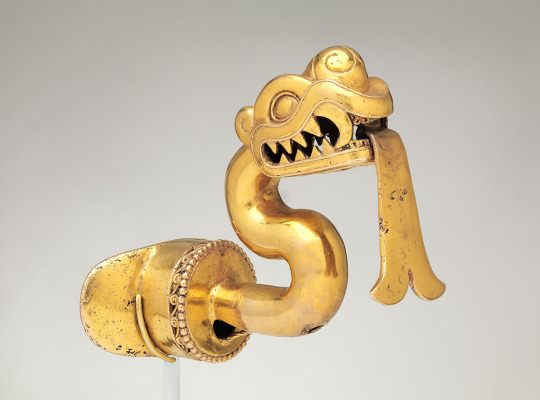
I want to note that although the Met description uses the term "Aztec," the preferred term is Mexica according to what I have read from Mexica people.
According to the Met: "Superbly crafted in the shape of a serpent ready to strike, this labret—a type of plug inserted through a piercing below the lower lip—is a rare survival of what was once a thriving tradition of gold-working in the Aztec Empire. Gold, in Aztec belief, was teocuitlatl, a godly excrement, closely associated with the sun’s power, and ornaments made of it were worn by Aztec rulers and nobles. Historical sources describe a variety of objects made of gold, including a serpent labret sent by Hernán Cortés as a gift to the Holy Roman Emperor, Charles V, yet nearly all of these objects were melted down at the time of the Conquest and shortly thereafter, converted to gold ingots for ease of transport and trade.
The serpent’s head features a powerful jaw with serrated teeth and two prominent fangs. Scales are represented in delicate relief on the underside of the lower jaw. A prominent snout with rounded nostrils rises above the maw of the serpent, and the eyes are surmounted by a pronounced supraorbital plate terminating in curls. On the crown of the head, a ring of ten small spheres and three loops rendered using the technique of false filigree represents a feather headdress with beads. The bifurcated tongue, ingeniously cast as a moveable piece, could be retracted, or swung from side to side, perhaps moving with the wearer’s movements. The sinuous form of the serpent’s body attaches to a cylinder or basal plug ringed with a band of tiny spheres and a band of wavelike spirals. The plain, extended flange would have held the labret in place within the wearer’s mouth.
Labrets, called tentetl in Nahuatl, the language of the Aztecs, were manifestations of political power. The Codex Ixtlilxochitl, an early colonial-period manuscript now in the Bibliothèque Nationale de France, Paris, includes a portrait of the ruler Nezahualcoyotl in full warrior attire, complete with a gold raptor labret (fol. 106r). Nezahualcoyotl was the lord of Texcoco, one of the three cities that formed the Triple Alliance, the union at the core of the Aztec Empire formed by the Mexica of Tenochtitlan, the Alcolhua of Texcoco, and the Tepaneca of Tlacopan. The Aztec title for the royal office was huey tlahtoani, or "great speaker," and the adornment of the mouth was highly symbolic. According to Patrick Hajovsky, a scholar of Aztec art, labrets were the visual markers of the eloquent, truthful speech expected of royalty and the nobility. Crafted from a sacred material, a labret such as this would have underscored the ruler’s divinely sanctioned authority, and asserted his position as the individual who could speak for an empire. Not surprisingly, therefore, the insertion of a labret was part of a ruler’s accession ceremony.
Labrets were also closely associated with military prowess. Specific types of labrets were awarded to warriors based on certain achievements. Gold ornaments, however, appear to have been restricted to royalty and the highest ranks of the nobility, although on occasion gold ornaments could be given by the king as gifts to provincial rulers. Because of its imperviousness to decay, gold would have been an appropriate material to suggest the enduring power of rulers. Such labrets would not have been worn on a daily basis, but rather as part of ceremonial or battle attire donned on specific occasions. Worn on ritual occasions and on the battlefield, this labret, like its wearer, a serpent ready to strike its prey, would have been a terrifying sight.
Serpents have been a favored subject in Mesoamerican art from at least the second millennium B.C. As creatures that could move between different realms, such as earth, water, and sky, they were considered particularly appropriate symbols for rulers and mythological heroes such as Quetzalcoatl, the legendary "feathered serpent." The combination of the curled eyebrow and snout, along with the feathered headdress, may mark this creature as Xiuhcoatl, a mighty fire serpent conceived of as an animate weapon of the Aztec sun god, Huitzilopochtli. Stylistically, this labret has much in common with works in other media, from monumental stone sculptures to a turquoise mosaic double-headed serpent pectoral now in the British Museum (AOA AM 94-634).
Although gold working developed relatively late in Mesoamerica (after AD 600), metalsmiths developed innovative approaches in different regions and produced works of great artistry and technical sophistication. Oaxaca, one of the major sources for gold, was also long considered one of the primary centers for the production of gold objects. Recent research by Leonardo López Luján and José Luis Ruvalcaba Sil, however, has revealed an important gold working tradition in the Basin of Mexico. Small cast gold bells and ornaments of hammered sheet metal have been excavated at Mexico City’s Templo Mayor, or Great Temple, the sacred center at the heart of the Aztec Empire. The finds there include a bifurcated tongue fashioned from sheet gold, and cast-gold bells that once adorned a wolf and an eagle, animals that were sacrificed and placed in one of the Templo Mayor’s dedicatory caches.
Outside of the Templo Mayor finds, the majority of the Aztec works in gold that have survived—including this labret—are ornaments for the royal or noble body. Most Aztec labrets are plain obsidian or greenstone plugs (see, for example, MMA 1979.206.1090-1092), although exceptional examples were made in the form of raptors such as eagles (MMA 1978.412.218; Saint Louis Art Museum 275:1978; Museo Civico di Arte Antica, Turin; see also one in jadeite, MMA 02.18.308). Another serpent labret, possibly from Ejutla, Oaxaca, is now in the National Museum of the American Indian in Washington, D.C. (18/756).
This serpent labret, perhaps the finest Aztec gold ornament to survive the crucibles of the sixteenth century, is an exceedingly rare testament to the brilliance of ancient Mexican metalsmiths. Monumental sculpture in stone, ceramic vessels, and other more durable forms of cultural production shed light on key aspects of Aztec ritual and daily life. But gold, in its infinite ability to be transformed, melted and re-worked, could always be remade to suit current needs, and thus rarely survives from antiquity. Though small, this masterpiece opens a window into Aztec culture at the very highest level, a world almost entirely obliterated when Hernán Cortés arrived on the shores of Mexico in 1519."
12 notes
·
View notes
Note
I love Revali, a lot. So I want to show you guys the difference between Latin American Revali's memory dialogue (the one I knew first) and English Revali as a little fun fact for all my Revali fans here in this blog! (I'll translate latam's dialogue.)
English Dub:
Impressive, I know...
Very few can achieve a mastery of the sky.
Yet I have made an art of creating an updraft that allows me to soar.
It's considered to be quite the masterpiece of aerial techniques, even among the Rito.
With proper utilization of my superior skills, I see no reason why we couldn't dispense with Ganon.
Now then, my ability to explore the firmament is certainly of note...
But let's not–pardon me for being so blunt–
let's not forget the fact that I am the most skilled archer of all the Rito.
Yet despite this truths, it seems that I have been tapped to merely assist you...
All because you happen to have that little darkness-sealing sword on your back.
I mean, it's just... asinine.
Unless... you think you can prove me wrong?
Maybe we should just settle this one on one?
But where...? Oh, I know!
How about up there?!
Oh, you must pardon me.
I forgot you have no way of making it up to that Divine Beast on your own!
Good luck sealing the darkness!
LatAm Dub:
Impresionante, ¿no? No hacen falta alas para apreciar tal proeza. (Impressive, isn't it? You don't need wings to appreciate such a feat.)
He perfeccionado la técnica de crear corrientes de aire ascendentes. (I've perfected the technique to create upward air currents.)
Mi nivel de maestría es inigualable, incluso entre la tribu orni. (My level of maestry is unmatched, even among the Rito tribe.)
Con todos mis talentos, estoy seguro de que podremos derrotar a Ganon sin mayores dificultades. (With all my talents, I'm confident we will defeat Ganon without much difficulty.)
Es más, no solo destaco por mi dominio del arte del vuelo... (What's more, not only I excel in my mastery of flight...)
sino que además, y te lo digo con sinceridad, en toda la aldea no hay arquero más diestro que un servidor. (but also–and I tell you this sincerily–in the whole village there is no archer more skilled than yours truly.)
Y sin embargo, mi cometido no es más que apoyarte a ti... (And yet, my mission is none other than support you...)
¡Todo por el simple hecho de que llevas esa espada tan ridícula en la espalda! (All because of the simple fact you carry that ridiculous sword on your back!)
Ja.. ¡Qué gran estupidez! (Ha... what a great stupidity!)
Ay, perdón... veo que te ofendí. (Ah, sorry... I see that I offended you...)
¡Si quieres te reto a un duelo y lo solucionamos! (If you want, I can challenge you to a duel and we'll solve it!)
Pero ¿dónde? Ah, sí... ¿Qué te parece ahí arriba? (But, where? Ah, yes... what do you think up there?)
Claro, claro, no eres capaz de llegar tú solito... ¿Te llevo? (Of course, of course, you're not capable of going on your own... shall I carry you?)
¡Jajajaja! (Hahahaha!)
So yeah... I love Revali no matter what but after seeing Revali's memory in all of the other languages, I find curious how the only dub of the game that has an extra line instead of a laugh at the end, is the english one... I've seen people talk about Revali's english dub and say he's different from the japanese one, specially in his diary, so I got curious because the latam translation tends to be as close as possible to the original (japan)... and I've found that, they're right. Revali in english tends to be depicted as more of a jerk than his latam translation, and I imagine the same goes for the other dubs too... maybe I'm wrong, but I will look more into it and when I can, I'll come back and share my findings here! (I love this blog sm, it's the best thing I've found in the fandom!)
_*_
#loz#loz confession#legend of zelda#botw#botw confession#breath of the wild#revali#Other language dubs#ty for the blog love :D
14 notes
·
View notes
Text

Rick Owens AW25/26 – Concordians
This laser-perforated dress from Rick Owens' Concordians collection is a feat of sculptural fashion, blurring the line between garment and exoskeleton.
Realized in collaboration with Paris-based designer Victor Clavelly, the piece is crafted from groppone leather, cut into a latticework of interconnected fins using precision laser techniques.
The result: a garment that slithers and shifts with motion, simultaneously feral and futuristic.
The collection’s title, Concordians, references Concordia, the Italian industrial town that has housed Owens’ atelier for over two decades. It’s a personal homage to a place of solitude and discipline—a space where Owens shaped his radical minimalism into a doctrine of its own.
Throughout his oeuvre—from the apocalyptic elegance of Gethsemane to the dystopian priesthood of Performa—Owens has always juxtaposed ancient mythos with post-human silhouettes. AW25/26 continues that legacy, pushing craftsmanship and collaboration further. The inclusion of Victor Clavelly, known for his experimental textile work, marks a new depth of material exploration and technical finesse.
Presented at Palais de Tokyo to the industrial drone of Iggy Pop’s “Mass Production,” the show felt like a ritual of metamorphosis. Models with blacked-out eyes and towered boots glided in silence, each look a study in ascetic power.
This dress is not just wearable, it’s weaponized. It carries Owens' narrative of discipline, design, and introspection into a new realm of collective authorship.
Brutal, sensual, and immaculately constructed, it’s a future relic of fashion’s darker, more divine possibilities.
6 notes
·
View notes
Note
50. “It is impossible to say how first the idea entered my brain; but once conceived, it haunted me day and night.”
Okay, I don't know what it's not posting with the *whoops* 5 pages, but I will post it.
EDIT: I am thwarted by tumblr. Have these links: AO3
FFN
To infer that I am a haunted man is an understatement. I have a personality apt for obsession. To throw myself entirely into my passions with reckless disregard to my surroundings. At times such as these, my attention is consumed by, more often than not, composing. I may go days without moving from my post, neither sleeping nor eating; nothing of this earthly realm can deter me when I focus on the divinity of music.
That is, of course, until one Mademoiselle Christine Daae haphazardly entered my domain.
Nothing so pure with child-like whimsy and naivety has shaken me to my core as resolutely as one Mlle. Daae.
Initially, I could sweep her from my thoughts. She is a young woman with many prospects. No doubt, could easily find a patron that lurks in the corners of the ballet corps. Many other young women and girls have succumbed through desperation to those demanding aristocrats with too much time and money to spare, and plenty of disregard for the fairer sex.
Convincing myself it was just my carnal base desires leaching out from the pits of my own desperation could only go so far. Although the thought of hand to hand, flesh to flesh was undeniably enticing, it was the thought of domesticity with Mlle. Daae that plagued my every thought: how comforting the warm embrace of her arms must be. A petite sigh of boredom, deciding on what book to read. Slight quibbles on what to eat for the evening supper. Her jubilant enthusiasm for the next aria I undoubtedly would encourage her to sing.
Above all, the care and ritual that she would engage in for her own beauty. How rapturous it was, to gaze upon her as she gazed upon herself at her vanity. Vanity - the very word loathsome to me, suggesting as though men did not participate in gazing at women in the very same regard as a mirror.
These quick glances I so abashedly stole while she sat preening, unbeknownst to my very presence, were not lecherous albeit voyeuristic. No, the careful application of rouge upon her cheeks and lips entranced me. Fur-soft puffs laced with powder enhance her brilliance. Waxed perfume enticing all the senses upon her wrist and decolletage. And sin against sins, the way her bristled brush caressed through her golden tresses. That, truly, was my undoing.
The carefully laid witchcraft of feminine makeup was inspiring to me, for it could potentially do wonders for even the most macabre of faces into looking somewhat respectable. I had dabbled in the venture myself, using theatre techniques to adhere attributes to myself that were so sorely lacking.
But the spell Christine cast upon me while brushing her hair was my undoing. Alas! To be the silken ribbon tied behind her graceful neck to keep the mass of riotous curls at bay so she could study her scripts, movements, chords... To run my spindly claws through her hair...
It is impossible to say how first the idea entered my brain; but once conceived, it haunted me day and night. I wanted nothing more than that domesticity, accumulating to be able to assist her in her womanly needs. To fetch the shade she needed for her next scene or to comb out the tangles of the divine. I wanted, nay, needed to be a house husband to her. Fawning over her every whim, cooking, cleaning, making sure my Nordic Goddess could never want. And then, hope upon hope, to stroll in a park on a Sunday.
After exposing myself as the fraudulent Ange de la Musique, we did settle into a somewhat harmonious existence. Not exactly to my fantasies, but surely we held each other in some regard.
Maddening silence was often my punishment if I did anything she deemed untoward. Granted, my violent outbursts were getting more and more frequent as she gained more notoriety, attracting the attention of other men. She was not mine, not truly, but I could see fit she was not theirs, either.
I found myself in one of those sullen moods of hers. Dark circles plagued my Angel's under eyes. She no longer cared for her rouge, perfumes, or trinkets. She was no longer amused by my antics of sleight of hand, stories, or even songs.
Christine slumped into a morbidity that I knew only too well. True, her boy did indeed leave for the Northern Pole, and we're slowly acclimating ourselves to a potential future, whatever that may be, but the disdain in her gaze strikes me as sharply as a knife. No, perhaps not disdain that she feels for me; resignation may be the proper term for the hollow look in her eyes.
I never considered myself a timid creature, but the thought of her unhappiness sends me spiraling in isolation, to shun myself from her presence.
It was in this meekness, that I carefully approached the creature of all my desires, as she stared numbly at her vanity.
"Good evening, Erik," she stated automatically, not bothering to turn to face me. My eyes gleamed yellow in the reflection. If she wanted to speak to me thusly, I would acquiesce and respond in kind.
"Good evening, Christine." My voice was low, not demanding, but certainly not The Voice. I had refrained from using The Voice on her in many months after she berated me that she did not like losing her faculties as such.
"Around me," was the unspoken phrase that she had not explicitly stated, but the implication was thus.
No matter, I did not want her to be hypnotized to tolerate me. This 'case of the morbs', my dearest had, was better than utter disdain or calmness against her will. My desires were simple, to enjoy each others' company, for a smiling bride awaiting her gruesome husband and to welcome me with kindness.
Reason dictated that I repair the contemptuous relationship we found ourselves in. But women are fickle creatures and any means of being contrite seemed to annoy her. Could I not read the emotions of other creatures well enough? Are humans not but animals with longings to be loved as well as any?
In my coveted ideal of domesticity, I found myself liking Christine to be a feral feline that one should be cautious to approach, lest she hiss and strike you with an open paw. But perhaps in providing for her needs, she might allow a gentle pet.
I stood behind her, my hands wringing, uncertain of how to broach the question that had plagued my mind.
She sighed heavily, her eyes closing in - annoyance? Trepidation? - before asking, "what is it, Erik?"
I nearly bristled at the directness of her question, but Christine had mentioned it is easier to get what you want with honey rather than brute force - whatever that is meant, I took a cautious step toward her.
The precious girl did not run away.
"Erik wanted to know-" I froze as her mouth deepened into a frown at my slip. She admonished me frequently for not speaking in the first person. "I wanted to know-" I quickly corrected, "if you require some assistance with brushing your hair?"
Her eyes fluttered open and she looked at me through the mirror of her vanity quizzically. I took another step forward, rubbing my wrists in uncertainty. She once mentioned she liked my cuffs a little shorter, exposing my wrists, and I adjusted my entire wardrobe accordingly, but instances like this made me feel exposed all over.
"What?" Her hands automatically ran over the ends of her hair, indeed, finding a mass of tangles and knots. She looked down in an all-too familiar expression for me: shame at her appearance.
My hands dropped to my side, my body rigid in fear, that I caused the anguish that shadowed her beloved features. "What I mean to say- not that you require it- I thought it would- no, no you mustn't-" My thoughts were a jumbled mess as did my words, usually so mastercrafted, fell so flat into nonsense.
As I rambled, Christine turned in her seat, witnessing my awkwardness. She toyed with a stray lock of hair, plucking at some split ends, her usual proper posture hunched and withdrawn. She was quiet as I hurriedly decided to dismiss myself and wallow in my awkward misery into my own room, when her voice called in a meek, considering way, "all right."
"I shall see myself out because you certainly do not wish for me to-" I snapped to attention and whirled back around, "-all right?"
She nodded and retrieved her hair brush, silently reaching it toward me.
My mouth gaped open and shut like a gasping fish before moving toward her once again.
"All right," I responded in kind.
Reaching for her brush, our fingers touched, ever so slightly, and I held the gasp that threatened to escape my throat. I was touch-starved, this is true, but the demure sensation was a relief to one more step toward normalcy. I looked to her to see if she was offended that my skeletal hand should touch her radiance, but no screams were heard. She simply nodded and turned back to face the mirror as I stumbled to stand behind her. Heat blossomed across my masked face, my ears betraying my blush that she would allow me to touch her.
My hands trembled, unsure where to begin, unwilling to hurt the angel in front of me. This was a foolish endeavor, I know nothing about caring for long hair, particularly the mass of curls before me. I pressed the brush to bundle of tangles at the nape of her neck and tried to pull down. The bristles stopped dead in their tracks, but Christine's head went down with the motion with a gasp, "ow!"
I froze in terror, all feeling draining from my person. I had wounded my Christine. I hurt her unintentionally once again. "Apologies, my-m," I bit my tongue to prevent myself from saying out loud, "My Christine." I wanted to run, to flee, to have her never look upon me again and to give up this silly dream. But I also wanted to persevere, to be of use to her, to see that smile once again.
Christine sensed my hesitancy, and with the patience of a saint, she mimed how to start in the mirror. "From the bottom," she said quietly, just above a whisper. "Work your way up to the top. That will help with the tangles. I have not felt like myself, I can do it-" she reached for the brush and I snatched it away from her grasp.
"No!" I barked, too loud. She winced from the loud exclamation, but the poor dear did not run in terror. I cleared my throat and inhaled deeply to settle my nerves, "No," I stated more gently, but firmly. "Eri-I wish to do this for you." I looked at her earnestly. "Please."
She looked warily at me and I inwardly chided myself. My emotional outbursts were more and more infrequent, but they still bubbled to the surface now and again. She slowly nodded and repositioned herself in front of the mirror.
Cautiously, slowly, I started brushing her hair out. Her curls separated and poofed before me. I gripped a few locks and ran the brush through it, marveling how it shimmered in the candlelight. The tangles persisted, but as did this magnificent angel, nary a peep out of her lips. I moved through delicately, sections unraveling themselves and it became easier and easier to maneuver.
I restrained myself from burying my face in sunshine made tangible, to inhale her sweet perfume, but I shall admit it was a struggle. I did not want to cross the boundary of this tentative truce.
As I managed to make it all the way to the top of her scalp, the brush gliding through the rest of her tresses easily, Christine gave the sweetest feminine sigh and leaned back, against my frame. While I continued with my ministrations, my mind roiled in delight and fear. How do I navigate a situation like this? This was suddenly more intimate than I was prepared for and a quick excuse to leave became very appealing. I need to sleep? She would never believe that. Compose? Make some tea?
"I feel," her voice interrupted my frantic thoughts once again, "that if I were a cat," she paused, as if carefully examining her next words, "I might purr." She smiled - oh! How that angel blessed me with her smile- and looked at me once again.
Dumbfounded and skittish, I could only nod. The two of us fools, navigating dynamic we were naive to explore. I did not want to cease the brushing, but as her hair no longer needed attention, I was at a loss for what to do.
"Thank you, Erik." She reached back and separated the fluffy mane into three segments and deftly plaited her hair into a neat braid.
I took a step back from her, holding my hands, "You're welcome, Christine."
Silence enveloped us once again and I took that as a signal to leave.
"Will you tell me another story? It has been quite a long time since you read to me or told me of your travels."
She stood and offered her hand to me. Tentatively, I embraced it.
"Yes."
#wheel-of-fish#Phantom of the Opera#writing prompt#my writing#E/C#Erik/Christine#poto#phanfic#phanfiction
36 notes
·
View notes
Text

Savage in the kitchen
From a culinary esoteric philosophical perspective, Michel de Certeau’s metaphor "a savage in the kitchen" explores the relationship between the familiar and the foreign, structure and creativity, as well as convention and innovation in both mystical and culinary practices.
In the culinary world, the kitchen represents a place of structured activity governed by established rules and techniques. However, introducing a "savage," or something wild and uninhibited, into this structured environment could symbolize disrupting traditional culinary practices with bold, unconventional, or primal approaches to cooking. This disruption could lead to a new, creative exploration of flavors and methods, challenging the norms and expanding the boundaries of culinary art
Philosophically, this scenario mirrors the engagement with mysticism. Mysticism often challenges conventional spiritual practices and theological constructs, offering a raw, intense, and unmediated experience of the divine that disrupts orderly spiritual environments. Just as a "savage" in the kitchen might ignore established culinary methods to instinctively create something novel and possibly extraordinary, mysticism invites a direct, often unconventional, encounter with the spiritual, bypassing structured religious frameworks.
Thus, de Certeau might be suggesting that engaging with mysticism or introducing radical innovation in any disciplined space (like a kitchen) should be approached with caution and respect for the potential power and unpredictability of such an engagement. The distance he mentions could then be interpreted as a necessary space for safety, contemplation, and understanding before fully integrating these 'wild' elements into one's spiritual or culinary practice.
#michel de certeau#food#at the table#homecooking#nutritional health#sustenance#cooking#culinary#esoteric#harmony#primal#savage
10 notes
·
View notes
Text




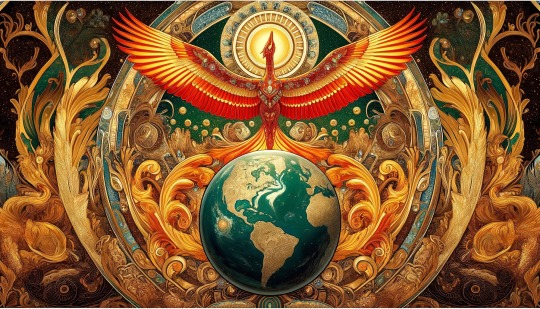
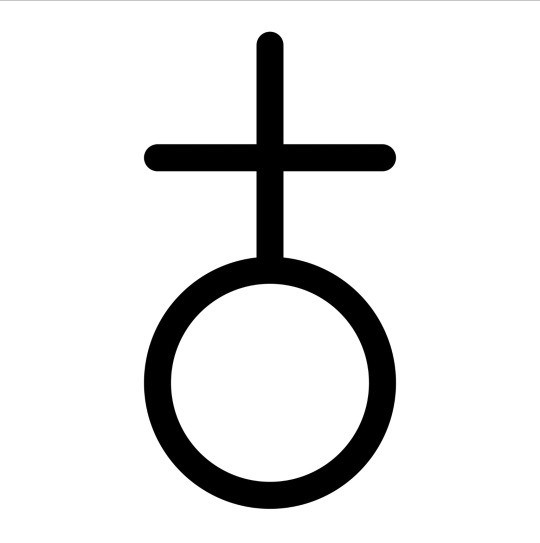

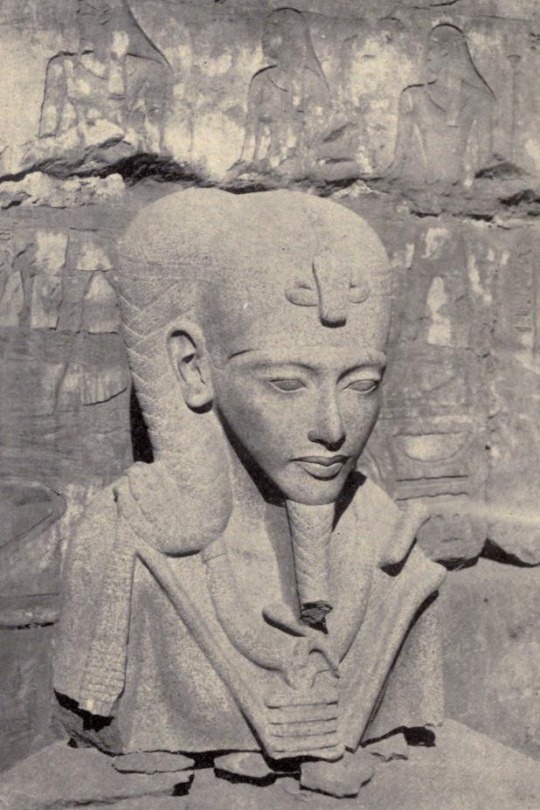

The Phoenix, the Moon and the Stone
“I am the bennu bird which is in Annu, Heliopolis, Cairo, City of the Sun, and I am the keeper of the volume of the book of things which are and of things which shall be. I came into being from unformed matter, I created myself in the image of the god Khepera, and I grew in the form of plants. I am hidden in the likeness of the Tortoise. I am formed out of the atoms of all the gods.
I am the yesterday of the four quarters of the world, and I am the seven uraei which came into existence in the East, the mighty one who illumineth the nations by his body. He is god in the likeness of Set; and Thoth dwelleth in the midst of them by judgment of the dweller in Sekhem and of the spirits of Annu.
I sail among them, and I come; I am crowned, I am become a shining one, I am mighty, I am become holy among the gods.
I am the god Khonsu, Lunar Traveller, Embracer, Pathfinder, Defender, and Healer, who driveth back all that opposeth him.”
From “The Egyptian Book of the Dead” (1550 BCE).
“The hieroglyph of the Stone of the Philosophers is ♁, which undergoing the action of Fire within the crucible becomes the Philosophers’s Stone, the resurrected Saviour or the flaming Phoenix.”
From “The Golden Game” by Stanislas Klossowski de Rola (1988).
“An effective means to achieve congress with the Phoenix is via the technique of Imaginal Projection. The Phoenix is a genuine living symbol: as such it possesses an innate mind and being which may be interacted with.
The Initiate must, however, first burn with an inward desire to do so. This is not merely a passing wish or fancy but a cultivated intention borne from a drive to commune with the Spirit of the Divine. It must be sincere and passionate, for it is from Passion alone that fire attracts Fire.
Then, with all the creativity in one's possession, one fashions the image of a Phoenix in perfect detail within one's sensorium. Every line, curve, attribute, feather and flame of Our Bird must be imagined and held in solid integrity in the Heart and Mind of the Initiate. Success in this will be achieved once the Imagined Symbol becomes the Living Creature, and this cannot be described, only experienced. Once Our Bird achieves life and movement within the sensorium of the Initiate, it must then not be allowed to escape
The Initiate unites his own soul with the spirit of the Phoenix. This is accomplished through the Heart, wherein lies a secret umbilicus that is projected into the burning center of the Aves Ignis (“Bird of Fire”). This has many names but is verily the ancient and literal Dart of Eros. The means of projection may only be learned in the moment of its projection, and this, again, cannot be described, only performed.
Once this vital communion has been established it is then possible for the Initiate as the Phoenix itself to arise as a vehicle for Ascension and traverse the realms of the Zoösphere with impunity and knowledge.
The Initiate has then become what was once imagined, and what has been imagined has once more arisen and become what it has always been, what it is, and what it shall be: the immortal Phoenix of Eternity, the veritable reality of the Zoösphere in Manifestation and Perfect Form.”
From “Arcanum Bestiarum” by Robert Fitzgerald (2012).
24 notes
·
View notes
Text
Je me suis retrouvée à penser à la religion dans Kaamelott et c'est tellement étrange mais genre, d'une manière super intéressante
Donc, il y a les Dieux. Ils existent, ils ont un impact sur le monde, on le voit à travers la série et le film. Puis, il y a le dieu chrétien, le Dieu Unique. Pour le coup, on n'a pas vraiment beaucoup de preuves de son existence hormis l'endorssement des Dieux, ainsi que la BD l'armée du nécromant, où après 20h de prière et à essayer d'échapper au danger, Père Blaise balance un rayon de lumière divine qui désintègre les revenants (et sa croix)
Clairement, il y a l'air d'avoir en effet ce dieu chrétien aussi, c'est juste qu'il répond moins aux appels que les Dieux.
Jusqu'à présent ça va, mais c'est quand tu t'intéresses aux détails que ça devient bizarre:
1) Les chevaliers sont techniquement chrétiens, car ils font la quête du Graal, qui est une quête liée au Dieu Unique. "Techniquement", parce que la plupart semble soit n'en avoir rien à foutre, soit tenir les croyances païennes qu'ils ont apprit en grandissant
2) Arthur est l'élu des Dieux. Ce sont eux qui l'ont choisi pour unir la Bretagne, et seul lui peut voir leur envoyée la Dame du Lac
3) La Dame du Lac est censée aider avec la quête du Graal. C'est son job. La Dame du Lac, envoyée des Dieux, doit aider Arthur, élu des Dieux, à trouver le Graal, une quête du Dieu Unique.
4) Arthur est censé s'être converti au christianisme. Il suit la religion du Dieu Unique, et non pas la religion des Dieux qui l'ont choisi comme roi de Bretagne
5) L'impression est alors que les Dieux travaillent pour le Dieu Unique, expliquant qu'ils soient d'accord avec tout le monde quittant leur religion. Cependant, dans un épisode on apprend que Merlin a peur d'énerver les Dieux s'il se convertit, ce qui indique que malgré tout, les Dieux sont pas complètement chauds à l'idée de perdre des personnes qui les vénèrent
6) Kaamelott se passe durant une période de transition, où la vénération des Dieux laisse place à la vénération d'un Dieu. La quête du Graal, c'est un peu un moyen d'aider à répandre le christianisme. Les Dieux semblent donc travailler dans la direction de ce remplacement
On a donc des dieux qui aident un autre dieu à les supplanter, et entre les deux, ce sont les Dieux les plus actifs pour effectuer cette transition, bien qu'ils ne semblent pas complètement d'accord avec l'idée de perdre tout le monde
Ce qui bien sûr amène à des réflexions super cool sur comment tout ce bousin fonctionne. Le Dieu Unique est-il juste un des Dieux, mais qui est plus jeune et beaucoup plus puissant? Les Dieux l'aident-t-ils parce qu'ils le veulent, parce qu'ils ont peur?
Bref je parie qu'il y a un gros jeu d'échec politique chez les Dieux, et les personnages ne sont au final que leurs pions
#kaamelott#peut-être que DU il a rien demandé en vrai et c'est pour ça qu'il ignore tout le monde#il est super fort donc tous les autres veulent être celui qui le met au pouvoir et peut l'aider#pour récupérer ses fidèles de manière interposées or something
16 notes
·
View notes